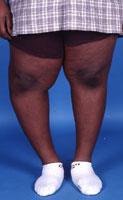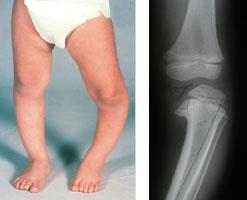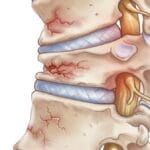Bowed legs, also known as genu varum or Blount’s disease, are a common and typically normal stage of development in toddlers.
When a child with bowed legs stands with their feet together, a noticeable gap can often be seen between their knees and lower legs due to one or both legs curving outward. This curvature is often more pronounced during walking, giving the legs a characteristic bowed appearance.
In most children, this condition resolves naturally as they grow, with the legs gradually straightening by the age of three. However, if the bowing persists beyond this age, it may signal an underlying issue such as infantile Blount’s disease or rickets, which require medical evaluation.
Bowed legs can also appear in adolescents, typically between the ages of 11 and 21. In such cases, the condition is often linked to adolescent Blount’s disease, with obesity being a common contributing factor. Early diagnosis and treatment in these situations are essential to prevent long-term complications.
Causes of Bowed Legs: Understanding the Underlying Factors
Physiologic Genu Varum
In most children under the age of 2, bowed legs are a natural variation in leg appearance, referred to as physiologic genu varum. This condition is part of normal growth and development.
The bowing typically starts to improve around 18 months of age and continues to correct itself as the child grows. By the time the child reaches 3 to 4 years of age, their legs usually have a straight and normal appearance.
Blount’s Disease
Blount’s disease is a condition that can affect toddlers and adolescents, caused by an abnormality in the growth plate located at the top of the tibia (shinbone). Growth plates are essential for determining the shape and length of bones during development.
In children under 2 years old, distinguishing between Blount’s disease and physiologic genu varum can be challenging. However, by the age of 3, the bowing caused by Blount’s disease typically worsens and becomes apparent on an X-ray, requiring medical intervention.
Rickets
Rickets is a pediatric bone disease that leads to bowed legs and other skeletal deformities. It occurs when children lack sufficient calcium, phosphorus, or Vitamin D—nutrients critical for healthy bone development.
While nutritional rickets is rare in developed countries due to Vitamin D fortification in foods like milk, it can still occur, particularly in children who are exclusively breastfed without supplementation. Additionally, rickets may arise from a genetic disorder that impairs Vitamin D absorption, which can be inherited.
Symptoms of Bowed Legs
Bowed legs are most noticeable when a child stands or walks.
- Awkward Walking Pattern: Children with bowed legs often exhibit a distinct walking style.
- Normal Coordination: Despite the appearance, most toddlers with bowed legs have normal coordination and typically do not experience delays in learning to walk. However, the degree of bowing can be concerning for parents.
- Intoeing: A common feature accompanying bowed legs, where the feet turn inward, is often observed in toddlers.
- No Pain in Young Children: Bowed legs generally do not cause discomfort in young children.

Nonsurgical Treatment
- Physiologic Genu Varum
Active treatment is usually unnecessary for physiologic genu varum. However, regular follow-up visits with your child’s doctor are essential to ensure the bowing naturally resolves over time. - Blount’s Disease
- Toddlers: Bracing may help to gradually correct the bowing in younger children.
- Adolescents: Bracing is generally ineffective for adolescents, who often require surgical intervention.
- Rickets
If rickets is diagnosed, your child will likely be referred to a metabolic specialist for targeted medical management. This often includes medications to control the effects of rickets, alongside regular orthopedic follow-ups to monitor progress.
Surgical Treatment
- Physiologic Genu Varum
In rare cases where bowing persists into adolescence and causes cosmetic or functional concerns, a surgical procedure called guided growth may be performed to correct the alignment. - Blount’s Disease
- Infantile Blount’s Disease: If bracing does not halt the progression of bowing by the age of 4 years, surgery will be necessary. Surgical intervention helps prevent further deformity and protects the growth plate of the tibia.
- Adolescent Blount’s Disease: Older children with severe bowing require surgery to correct the misalignment and restore proper leg function.
- Rickets
Surgery may also be needed for children whose bone deformities persist despite proper medical management with medications.
Types of Surgical Procedures
- Guided Growth
This minimally invasive procedure uses a small metal plate or staple to temporarily stop growth on one side of the shinbone. This allows the affected side to catch up and naturally straighten as the child grows. Once alignment is restored, the hardware is removed, and normal growth resumes. - Tibial Osteotomy
This procedure involves cutting the shinbone just below the knee and reshaping it to correct alignment. The bone is stabilized with either:- An internal plate and screws
- An external frame positioned outside the leg.
Post-Surgical Care
- Protection and Support: In some cases, a cast is applied to safeguard the healing bone.
- Mobility Aids: Your child may need crutches temporarily.
- Physical Therapy: A rehabilitation program with specific exercises can help restore strength and improve range of motion.
- Recovery Timeline: Your doctor will provide a detailed recovery plan, including when your child can resume normal activities.





